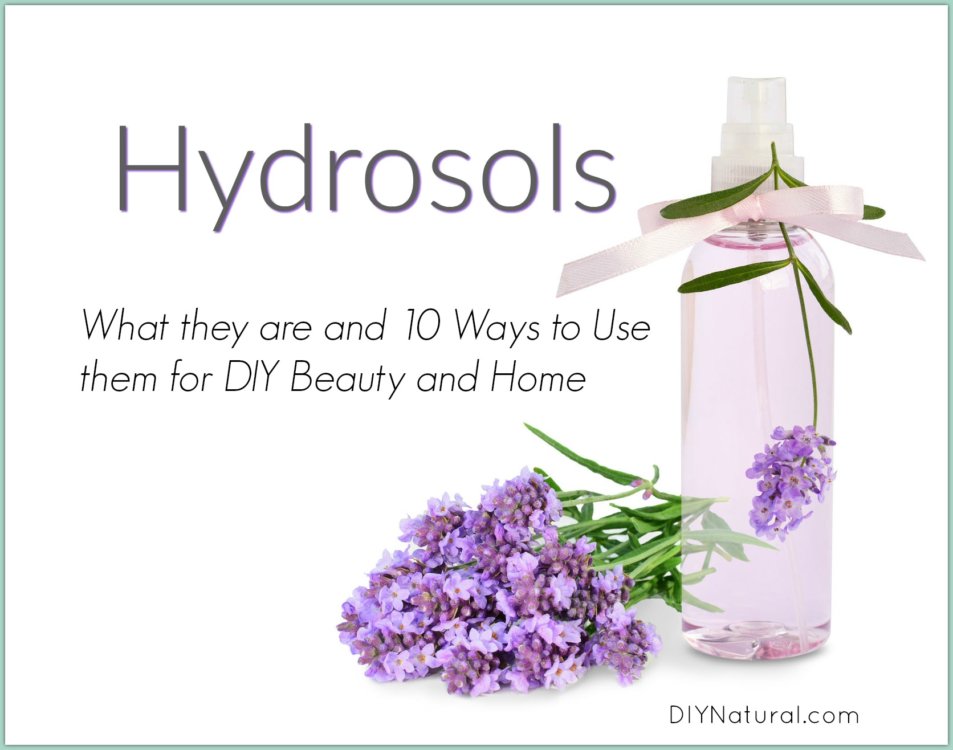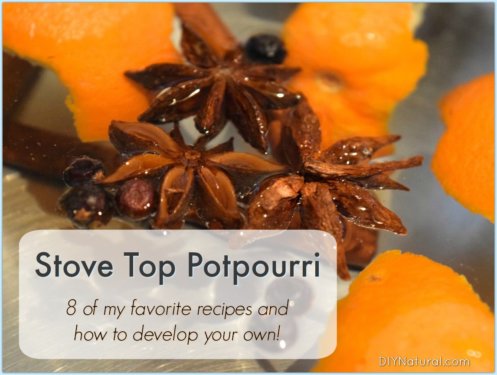
Essential oils are the focus of many natural homemade cleaners and recipes and for good reason. However, people are starting to take great notice of hydrosols and hydrosol uses!
What are Hydrosols?
Hydrosols are made by steam distilling plant material. This allows the cell walls to break down, thus releasing the plant’s oil content. The steam and oil are cooled causing the steam to turn to water and the oil to reside on top. These two parts are separated into hydrosols and essential oils.
While most people may be familiar with essential oils, hydrosols make wonderful additions to any cleaning or beauty routine. They have similar therapeutic properties to their essential oil counterpart but are much less concentrated.
Their uses are so numerous that it is hard to narrow it down to just 10!
Hydrosol Uses (10 Ways to Use Them)
I’m fairly new to the world of hydrosols and I enjoy trying each new one. Like essential oils, buying hydrosols from a reputable source is very important. Hydrosols can be adulterated, which means the aroma and therapeutic benefits can be changed. Make sure to know your source well and buy high-quality hydrosols. (Find high-quality organic hydrosols here.)
Linen Sprays
One of my favorite ways to use a hydrosol is as a linen spray. I love to use Lavender hydrosol on my pillows before bed and Rose hydrosol on my towels. Because they contain no oil, hydrosols are less likely to leave stains.
Cleaners
Hydrosols make great cleaners! I love using Peppermint hydrosol on my dust cloths because it helps trap dust and leaves behind an invigorating aroma. I use it on so many surfaces from countertops to couch cushions. Since hydrosols are safe to use around animals, I can use them in virtually any area of my home.
Children
One big difference between essential oils and hydrosols is that hydrosols are safe to use around babies and young children. There are some essential oils that can be used around children, but with caution and in low dilutions. I use hydrosols with my children much more frequently. Lavender and Neroli are two of my favorite hydrosols and I use them for sleepy-time sprays, in baths, and even in my homemade baby wipes. Both hydrosols are calming and soothing.
Animals
Also unlike essential oils, hydrosols are generally safe to use around animals. Use them to deodorize, repel fleas, for skin issues, and to calm. I’ve seen Lavender and Rose suggested for many animal remedies.
Room Fresheners
Since hydrosols are often cheaper than essential oils, I don’t mind spraying them all over my house! They often carry a lighter aroma that dissipates quickly. I like to use Douglas Fir hydrosol because it is somewhat masculine but has such a wonderfully deep, coniferous scent. I also use Lavender and citrus hydrosols to brighten my home.
Facial Toners
Some essential oils can be irritating to use around the eyes and face, but hydrosols make great facial toners. They can also help with dry or oily skin (depending on which hydrosol you choose). I love to use Calendula hydrosol and Frankincense hydrosol in my facial toners to help brighten and calm my sometimes irritated skin.
Baths
A tablespoon or so of hydrosols can make a relaxing aromatic bath. Since hydrosols are water soluble, they are the perfect addition to any bath. Lavender, Neroli, and Ylang Ylang are hydrosols I love to include in my baths.
Cooling sprays
Hydrosols are great additions to any summer day. Take them to the pool, to the beach, or outdoors when you are working in the sun. Mix a bit of the hydrosol with water in a spray bottle for a nice mist. Spearmint hydrosol is a great cooling mist for the back of the neck on a hot day.
Compresses
Hydrosols are perfect replacements for water in hot or cool compresses. Chamomile (German or Roman) hydrosol makes a wonderful anti-inflammatory compress.
Cuts/Scrapes
Spray hydrosols on cuts or scrapes to help ease inflammation and begin healing. Lavender and Helichrysum hydrosol are my go-to choices for cuts, rashes, and scrapes. Roman or German Chamomile are also good choices.
Do you have a favorite DIY hydrosol recipe? Please share with us in the comments section. We would love to hear from you!
*******




I am new to Hydrosols and was wondering if you can use them straight from the bottle or do you need to dilute them first? I would like to try one as a facial toner.
No need for dilution in hydrosols. That’s one of my favorite parts!
I made a hydrosol using lemongrass. It is great as a toner and also for itchy skin.
That sounds like it smells lovely! I’ve never used a lemongrass hydrosol, how did it smell?
Thank you for this post. I have several hydrosols, from MRH, but have yet to really use them. I found the first one I purchased to be a bit ‘ugly’ smelling! I even contacted MRH and they said it should be ok. I will have to try some of these ideas. I have used the peppermint for a cooling effect in the summer, and it really worked.
Yes! I always find that hydrosols lack some of the “sweeter” notes that their essential oil counterparts have. Helichrysum hydrosol has a much more plant-like aroma unlike Helichrysum essential oil which has some more honey-like aromas.